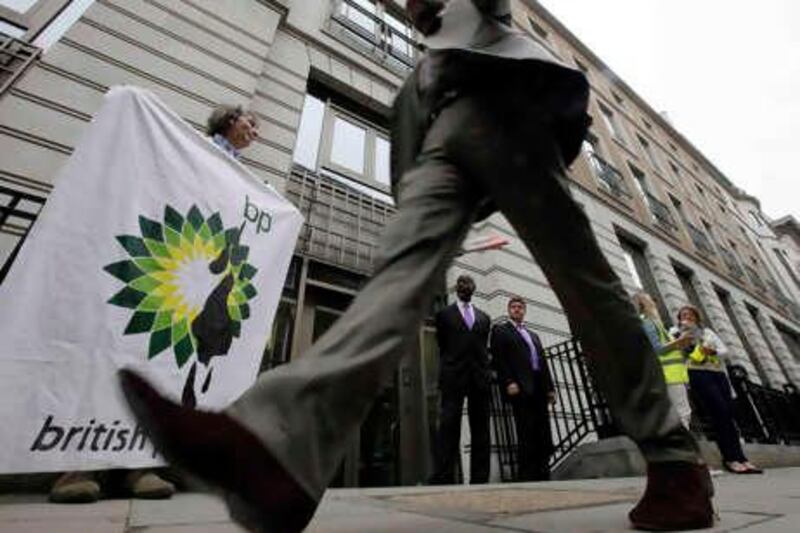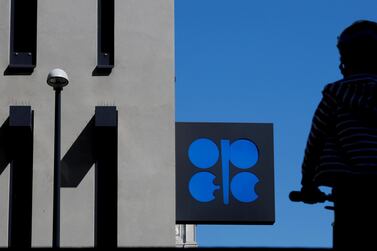Ever since the days of former chief executive John Browne, BP has had a talent for making headlines and leading the industry, if not always in the right direction. Its latest energy outlook, the first major long-term view that takes coronavirus into account, shows the potential for an imminent peak in oil demand.
Rather than some abstract exercise, such a near-term peak has big implications for the choices of companies and of Opec.
BP presents three scenarios for global energy and climate: one assuming “business as usual” gradual evolution of policies, and two consistent with the Paris Agreement targets of limiting global warming to 1.5-2 degrees Celsius. In every one though, 2019 appears the all-time peak of oil demand.
Even with business-as-usual, demand recovers only slightly to 2025 before falling gradually. In the other two cases, oil demand drops precipitously to 30-50 million bpd by 2050. That may seem a long way off, but is well within the active life of oil-fields developed today, and even more so of Opec’s remaining reserves.
The scenarios are given more credibility by being in line with BP’s own new corporate strategy. This sees its oil and gas output falling about 40 per cent by 2030, not entering any new countries for hydrocarbon exploration, while building up its portfolio of solar, wind and electric vehicle charging stations.
Despite claims by some media, BP is not the first major oil company to predict an imminent peak in oil demand. Statoil (now Equinor) has for some years had scenarios that peaked between 2025-30. Even BP last year provided a scenario with a peak around 2024. It is only natural that the severe demand destruction of Covid-19 would bring that date forward.
Moreover, all the major European oil firms have targets for net zero carbon emissions by 2050; BP’s is not the most aggressive.
Such scenarios depend on the post-Covid change in habits such as more home working, and the dismal effect of climate change in damaging economies in Africa and Latin America.
Non-oil technologies may be boosted by a rapid environmental conversion by the governments of leading countries, and the removal of policy barriers. Apart from renewables and electric cars, now quite mainstream, sectors such as plastics, shipping and aviation will have to find and deploy non-oil alternatives quickly.
European petroleum demand is certainly under strong pressure. The European Green Deal, part of post-pandemic recovery, will strongly emphasise electric vehicles. Refining and margins in shrinking markets, such as Europe and Japan now, would also fall. In 1967, there were 40 000 petrol stations in the UK; today, there are about 8000 for a car fleet three times larger. Charging points at home and work could eliminate many remaining forecourts.
The US’s near-term path depends on the results of November’s election. But in the longer term, public opinion in the more economically dynamic parts of the country, and the requirements of sustainability-minded investors, will drive companies to turn to zero-carbon options.
The big question mark is in developing Asian economies. India, China, Indonesia and others have not weaned themselves off coal, which is dirty but cheap and secure. Even the growing competitiveness of renewables has not yet made much impact on the portfolio of planned new coal power stations, despite analyses showing solar and wind would be cheaper.
This story may well be repeated for familiar and convenient oil-fuelled vehicles. Outside China, where the government has strongly backed them, electric vehicles will need to be clearly superior in cost and performance, and appeal to consumer tastes.
Since the global financial crisis, oil demand has grown on average almost 1.4 million barrels per day each year, ranging from 0.8-1 million bpd when oil prices were high to 1.8 million bpd when they had just fallen sharply (in 2015-16). Opec sees demand at about 90.2 million bpd this year and 96.9 million bpd next year, recovering to 2019 levels by 2022.
This depends, of course, on a rapid easing of the Covid-19 pandemic and the associated economic fallout. After the 2008-9 global financial crisis, in retrospect a less severe shock, demand rose 3 million bpd in 2010. A resumption of the last decade’s average growth from 2022 onwards would get us past the 2019 level by about 2024. So even BP’s business-as-usual scenario requires a sharp break with past trends.
For oil companies and oil-exporting countries, the exact timing of the peak may have attracted much debate. But it is less important than the level of demand at peak, the speed of the decline afterwards, and the price path. It would be easier to adjust to a long, bumpy plateau of demand than a rapid decline.
Prices will probably be lower on average as demand drops. But there will still be cycles of underinvestment and inadequate capacity when the market tightens.
Geopolitical events, perhaps the failure of the industry in collapsing states such as Venezuela and Libya today, could also interrupt supply. Investment in some non-Opec producers may be constrained by a loss of investor appetite along with growing government restrictions.
Because of these factors, BP sees Opec gaining market share. But its overall production is set to drop in the decade to 2030, then rise only gradually to 2050 even in the business-as-usual case.
National oil companies and ministries, who have planned for major production increases and for vast new refineries to meet Asian appetites, will hope that BP is mistaken.
Robin M. Mills is CEO of Qamar Energy, and author of The Myth of the Oil Crisis







